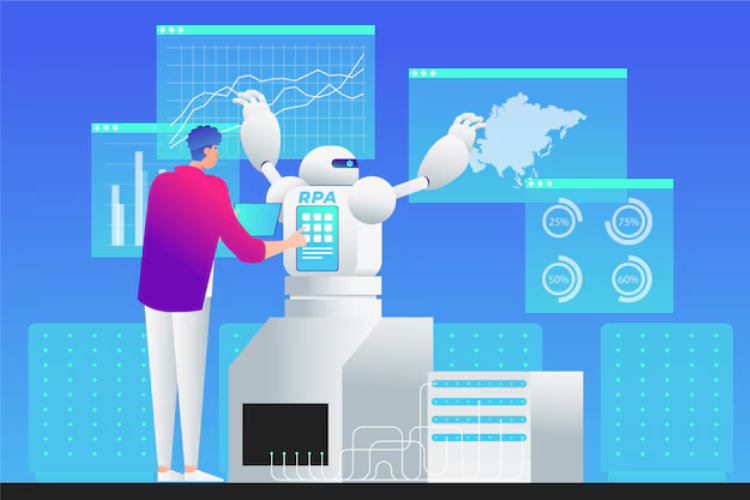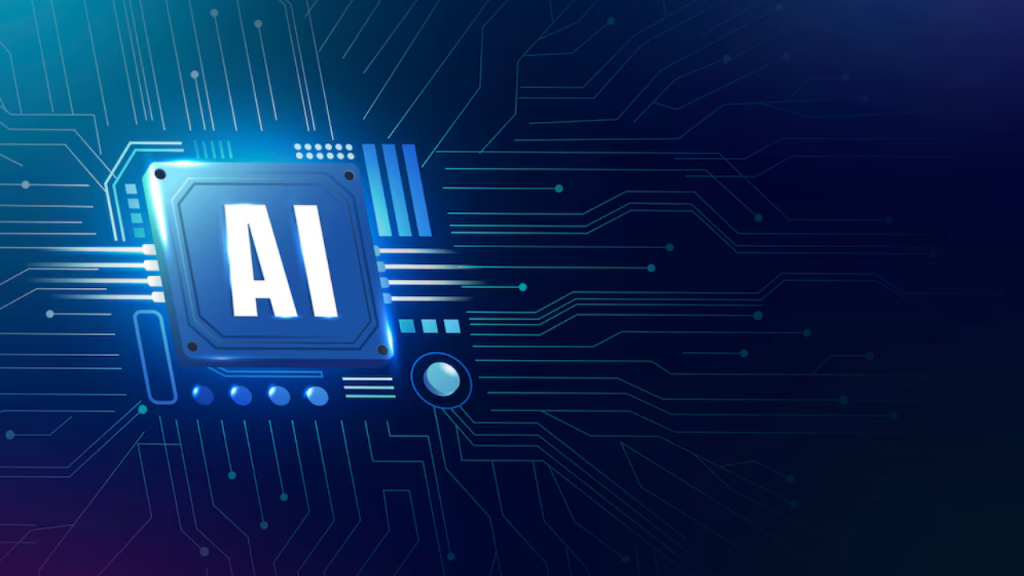Introduction
Artificial Intelligence (AI) has long been driven by the belief that bigger models mean better results. Large models like GPT-4 have captured the spotlight with billions of parameters, seemingly dominating the AI landscape. But the tide is turning. Smaller AI models, lean and specialized, are proving that size isn’t everything. These compact models are setting new benchmarks, changing the way developers and businesses think about AI. At StartupHakk, we thrive on innovation, and in this post, we’ll explore why these small AI models are not just a novelty—they’re the future.
The Rise of Lean AI Models
In the world of AI, bigger used to mean better. Massive models like GPT-4, with their billions of parameters, seemed unbeatable. But new benchmarks are proving otherwise. Small, agile AI models, designed for specific tasks, are beginning to outperform their bulkier counterparts. These lean models are highly specialized and trained for focused use cases, which makes them incredibly efficient. What’s more, they can run on smaller devices like smartphones and embedded systems. This not only makes AI more accessible but also opens up new possibilities for industries and developers looking to integrate AI into everyday products.
With small AI models, the future of artificial intelligence is no longer confined to high-powered servers or expensive infrastructure. It’s flexible, adaptable, and within reach for more users and industries than ever before.
AI in Your Pocket
Imagine having the power of AI in your pocket. That’s no longer a fantasy—it’s a reality. Small AI models are compact enough to run smoothly on smartphones and other portable devices. Gone are the days when deploying an AI-driven chatbot or smart assistant required large server farms. Now, these models are so efficient they can function effortlessly on mobile devices, using only a fraction of the power that larger models need.
This leap in technology doesn’t just reduce the hardware requirements for running AI; it also dramatically lowers electricity consumption. For mobile technology, this means a revolution. Developers can now create smart applications without worrying about draining the device’s battery or relying on external servers.
The implications are huge. From personal AI assistants to advanced mobile apps, the opportunities for innovation are limitless. AI is no longer just a tool for major corporations with vast resources—it’s now scalable for startups and individual developers too.
Cost Efficiency: A Developer’s Dream
One of the biggest advantages of smaller AI models is their cost efficiency. Running large models is expensive. You need high-end infrastructure, vast amounts of energy, and specialized hardware. Small models, however, are much more affordable to host and deploy. This is music to the ears of startups and small businesses, where every dollar counts.
With smaller models, developers can achieve the same—if not better—performance at a fraction of the cost. And since these models are built for specific tasks, they can outperform larger, general-purpose models in niche areas. Think of them as the laser-focused solution you need when precision and efficiency matter most. For businesses looking to scale without breaking the bank, small models offer an incredible opportunity.
For startups, this could be a game changer. They no longer need to compromise on AI capabilities due to limited budgets. Now, high-performance AI is within their reach.
Real-World Applications
The real power of small AI models shines in industries where resources are limited, such as healthcare, IoT, and drones. In these fields, every watt of energy and every megabyte of memory matters. Large AI models simply aren’t practical in these scenarios. But small models fit the bill perfectly.
Take healthcare, for example. Devices like portable health monitors, wearable tech, and diagnostic tools can now incorporate AI without the need for extensive infrastructure. These small models deliver precise, high-quality outputs, helping improve patient care while keeping costs low. Similarly, in the world of IoT and drones, small AI models ensure devices can operate efficiently without sacrificing performance.
The days of needing huge hardware setups for high-level AI performance are gone. Small models are rewriting the rules of what’s possible, opening the doors for AI to be embedded into even the most resource-constrained environments.
Impact on AI Research
Small AI models are not just changing the way developers build applications—they’re transforming AI research itself. A great example is Microsoft’s Phi-3, a small model that is outperforming much larger competitors. This is leading researchers to rethink their approach to AI. The belief that bigger equals better is fading, replaced by a focus on efficiency, adaptability, and speed.

Smaller models are easier to train, faster to deploy, and can quickly adjust to changes in datasets or environments. This makes them an attractive option for AI researchers who need flexibility and speed. The innovation happening in this space is setting the stage for a new era in AI development, one where small, agile models lead the charge in cutting-edge research.
This shift in focus could drive the next wave of AI advancements, with small models at the forefront of innovation. Researchers are now considering the possibility that less truly is more.
Security Advantages
Data breaches and cyber threats are on the rise, and AI is not immune. One of the major advantages of small AI models is their ability to enhance security. Because they require fewer resources, small models are easier to audit and secure. They present fewer points of attack, reducing the risk of exploitation.
In industries like finance and healthcare, where data protection is paramount, these models offer a significant advantage. They can be monitored more effectively for anomalies, making it easier to detect potential breaches early. This makes small AI models not just efficient but also safer, providing peace of mind for industries dealing with sensitive data.
Scalability Potential
Another key benefit of small AI models is their scalability. Larger models, while powerful, are cumbersome to scale across multiple platforms. Small models, on the other hand, can be easily replicated and deployed across different devices and systems. This makes scaling up a much smoother process for developers and businesses.
For companies looking to grow quickly, this flexibility is invaluable. Whether deploying AI across a network of devices or scaling a business globally, small models make it possible without the prohibitive costs typically associated with AI deployment. By democratizing AI, small models are making cutting-edge technology accessible to more people and more industries.
Specialization Over Generalization
Small AI models aren’t just about being more compact versions of their larger counterparts. They offer something much more valuable: specialization. These models are built to excel at specific tasks, outperforming larger, general-purpose models in focused areas. This allows them to deliver better results in key areas where precision matters.

Think of them as the Swiss Army knives of AI: versatile, reliable, and perfectly suited for the task at hand. The future of AI is no longer about one-size-fits-all models. It’s about bespoke solutions that cater to specific needs.
This shift toward specialization is setting a new standard in AI development, one that could reshape the landscape of the tech industry.
Energy Efficiency: A Necessity, Not a Perk
Energy efficiency is no longer a luxury—it’s a necessity. As the world grapples with climate change, the tech industry is under pressure to reduce its carbon footprint. Small AI models offer a solution. They use less energy, generate less heat, and require minimal cooling, making them an environmentally friendly option.
For businesses, this isn’t just a win for the planet—it’s a win for the bottom line. Companies that adopt energy-efficient AI will see significant savings on energy costs, gaining a competitive edge in the market. In a world that’s increasingly focused on sustainability, small AI models represent a greener, more responsible path forward.
Conclusion: The Future is Small and Mighty
The rise of small AI models is more than just a trend—it’s a game-changing shift in the AI landscape. These models are proving that bigger isn’t always better. With their ability to run on smaller devices, consume less energy, and offer specialized performance, they are setting new benchmarks in AI development.
For developers and businesses alike, the future of AI is small, agile, and mighty. By embracing these compact models, we can unlock new possibilities, drive innovation, and create a more sustainable, scalable future for AI. The next wave of AI advancements won’t just be large and powerful—they’ll be small and unstoppable.
What do you think?
Let’s discuss! Share your thoughts in the comments, and don’t forget to subscribe to StartupHakk. We’ve got hundreds of free coding videos, all with code samples to help you on your AI journey. Check out our website, and we’d love to help you build the future of tech!




